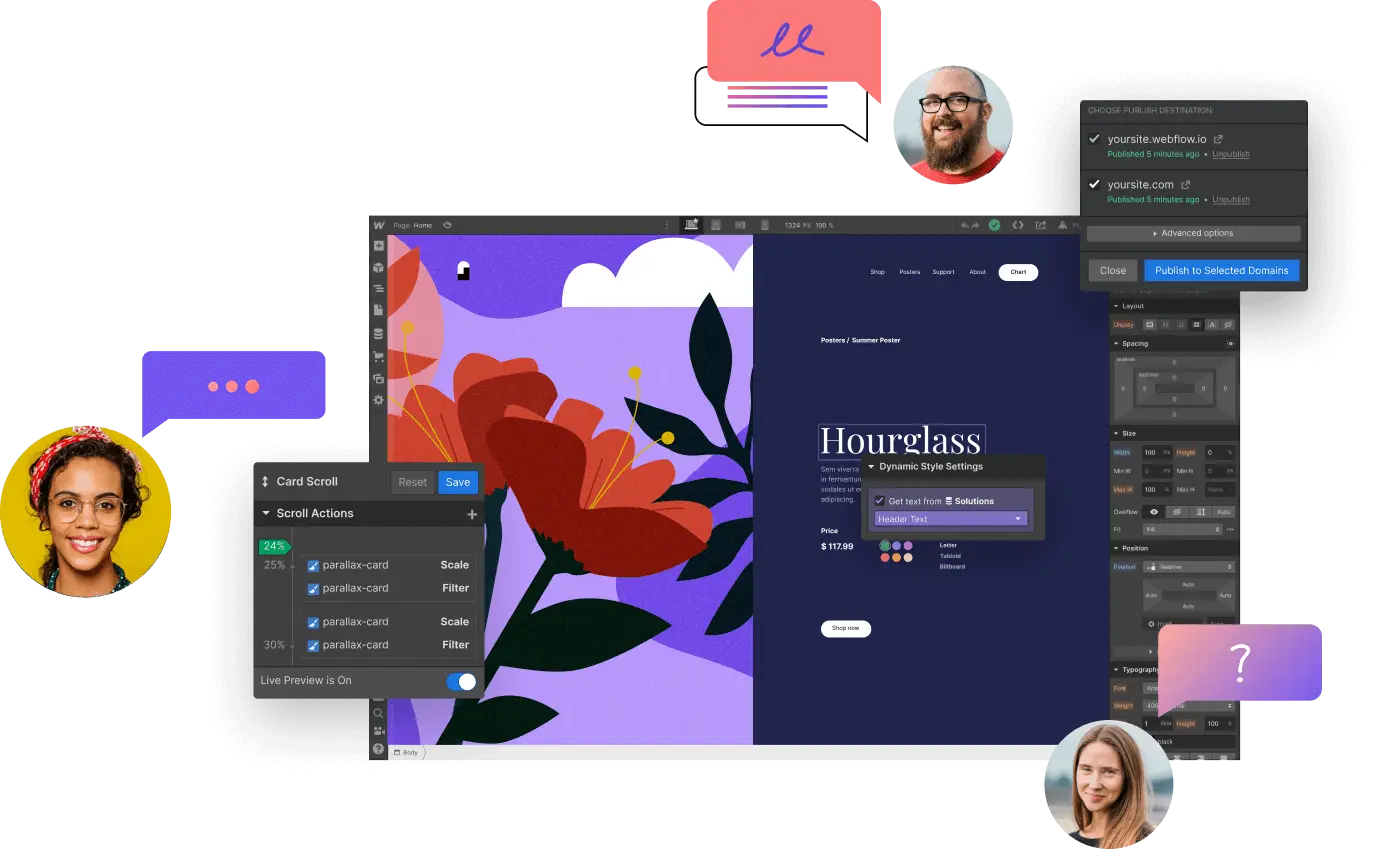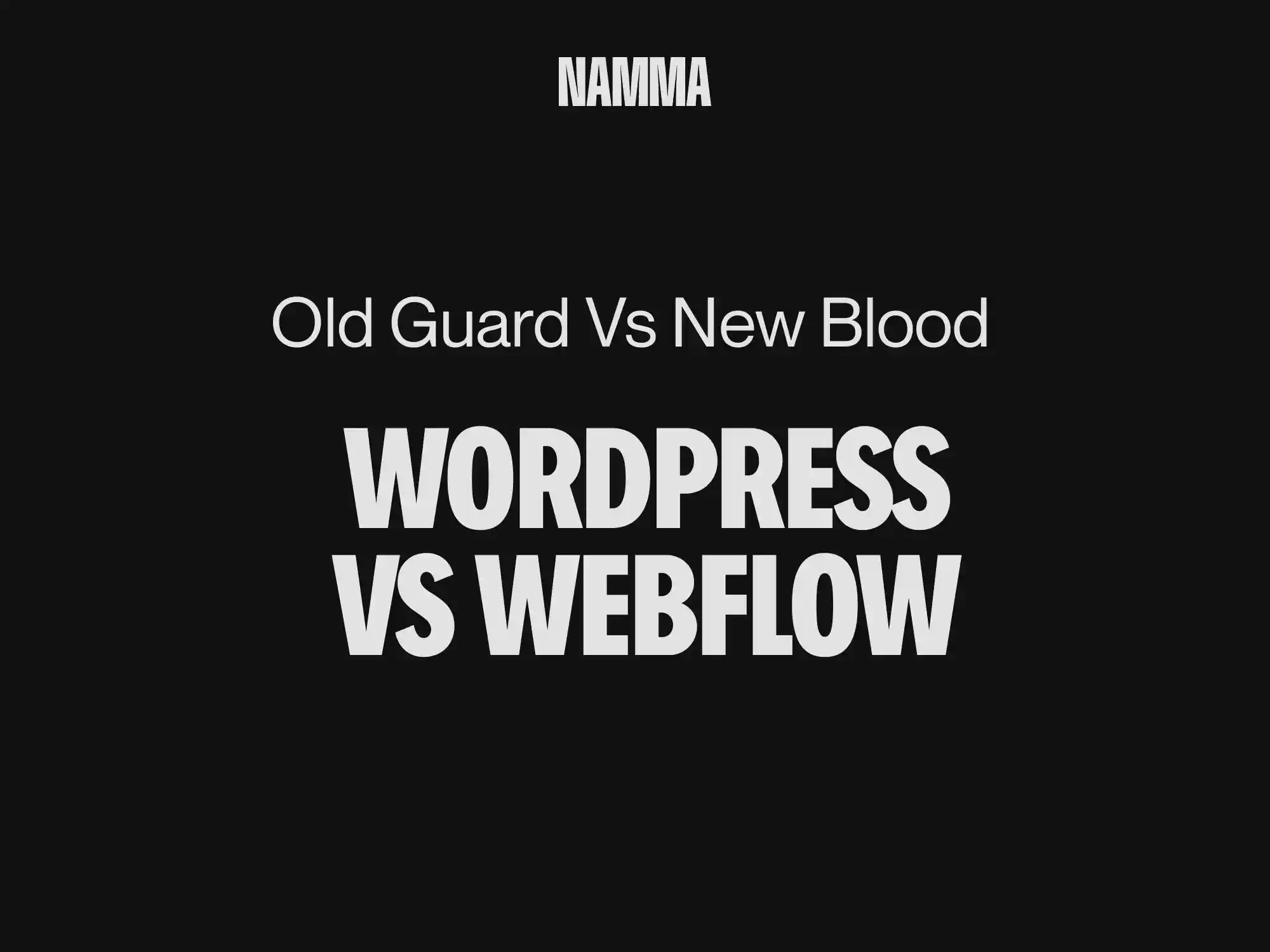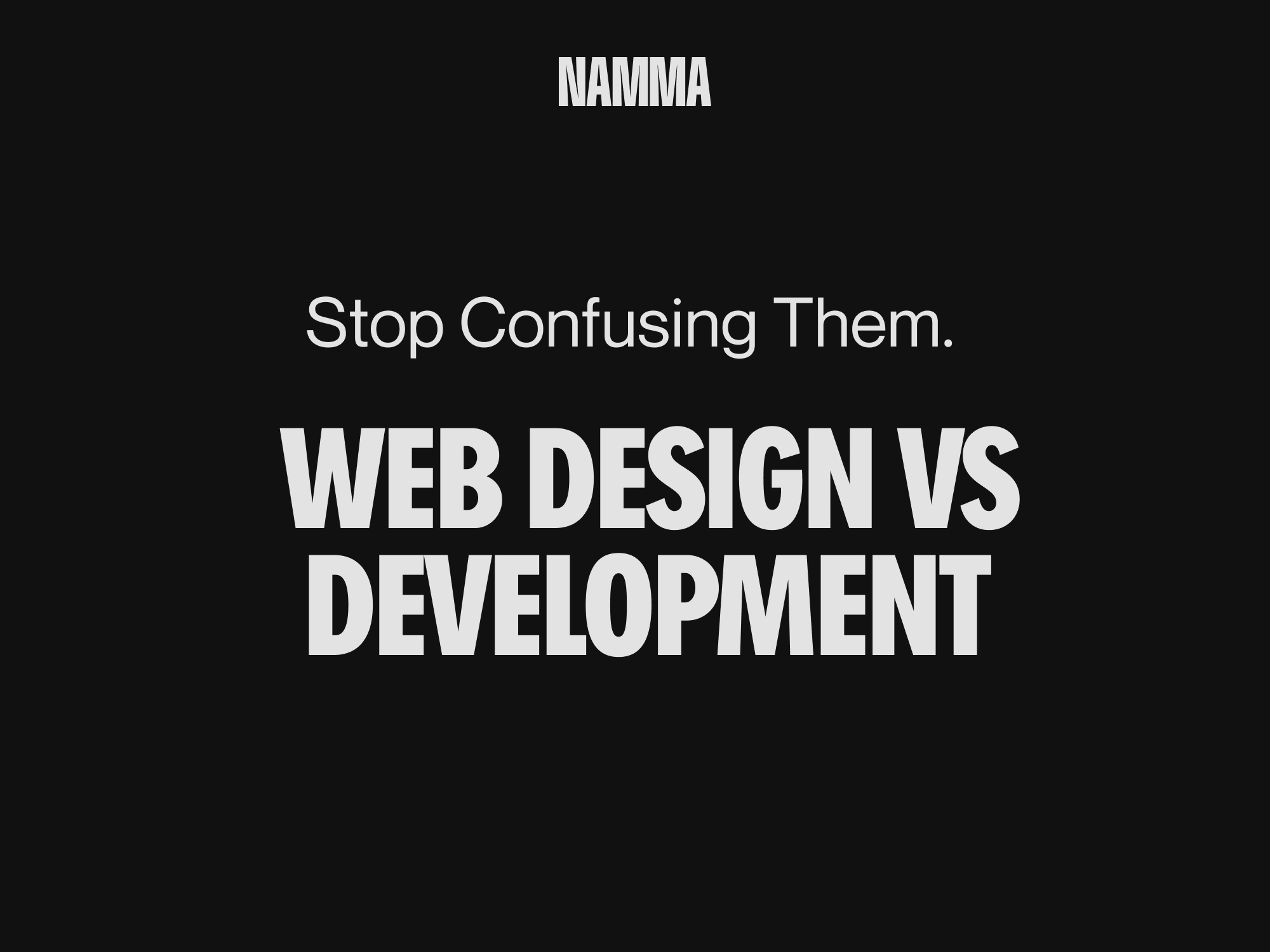Webflow, UX, and SEO: The Winning Trio
Still think UX and SEO are two separate disciplines? Time to crawl out of your cave. In 2025, that distinction doesn’t exist anymore. A poorly designed site will always rank poorly, no matter how good your keywords are.
User experience and SEO: let’s stop the hypocrisy
Seriously, how many “SEO-optimized” sites have we seen that are impossible to use? Tons. Just last week, a client called us in panic. His “perfectly SEO-optimized” site had tanked in Google rankings. Shocking? Not really. His site took 8 seconds to load and its navigation felt like a badly designed escape room. Brilliant SEO strategy, right?
SEO is about attracting people to your site. Keywords, backlinks, technical content… that’s the bait.
UX is what keeps them from running away screaming. It’s the overall experience, the satisfaction, the desire to stay. It’s the meal after the bait.
Splitting them apart is like inviting people to dinner and not serving them food. They won’t come back, and they’ll tell everyone.
UX is the secret fuel of your SEO engine.
Google doesn’t shout it from the rooftops, but its algorithms are more and more focused on user signals. Time on site, bounce rate, pages viewed… all of these signals tell Google whether your site deserves the first page… Or the digital graveyard of 2010.
So let’s cut the act. UX isn’t a “nice to have” for SEO. It’s the very foundation.

The ugly truth: Google favors sites that humans don’t hate
Shocking, right? Yet we still see brands spending fortunes on shady backlinks and keyword-stuffed content, while their UX looks like a 2005 relic.
The numbers don’t lie: according to the latest Core Web Vitals studies, 68% of sites hitting top scores also climb an average of 4 positions in rankings. Coincidence? Don’t be naïve.
Our A/B tests across 30+ client sites show the same thing: with IDENTICAL content, the versions with better UX convert significantly better AND climb search rankings faster.
How Webflow changes the SEO game
.webp)
Webflow isn’t just another CMS. It’s a platform that finally solves the forced marriage between UX and SEO. Here’s why we use it for 90% of our projects aiming for Google’s top spots:
1. Speed that makes your competitors cry
Load speed isn’t just another SEO factor. It’s THE factor that decides whether your site converts or becomes a ghost town.
A PageSpeed Insights study highlighted a brutal stat: when a page load time goes from 1 to 3 seconds, bounce rates jump by 32%. Harsh, but real: users don’t wait. Period.
Webflow runs on a global CDN powered by AWS and Fastly. Translation? Your site loads just as fast in Paris as in Tokyo. Even your competitor’s overpriced dedicated server can’t always keep up.
2. Responsive design without compromise
“But my site adapts to mobile!”
Cool. And how many visitors can actually tap your microscopic burger menu with their giant thumbs? How many rage-quit your tiny contact form fields?
With 63%+ of web traffic coming from mobile in 2025, responsive design isn’t optional—it’s survival.
SEO studies are unanimous: mobile experience and speed are now key ranking factors (Core Web Vitals). Thanks to built-in hosting and clean code, Webflow achieves strong Core Web Vitals scores more easily than WordPress, which usually needs heavy technical patching.
3. Flawless semantic structure
The HTML Webflow generates is surgically clean.
While WordPress and other old-school CMSs spit out spaghetti code wrapped in endless divs, Webflow produces structured HTML that Google bots love.
This semantic structure isn’t just a nerdy detail. It’s what lets Google truly understand your content. And a Google that understands is a Google that recommends.
4. Accessibility that boosts SEO (and your karma)
Web accessibility is now a major SEO criterion. Why? Because a site that works for people with disabilities is generally better coded, better structured, and more usable for everyone.
Webflow makes implementing WCAG standards easy with:
- Optimized color contrasts
- Smooth keyboard navigation
- Built-in alt attributes
- Consistent heading structure
Sites compliant with WCAG standards see a 25% organic traffic increase on average. And according to Google, accessibility has been a direct ranking factor since the March 2024 algorithm update.
UX mistakes that sabotage your SEO (and how Webflow fixes them)
1. Your navigation is a maze
If visitors need a compass to find your contact page, you’ve failed. A confusing site structure isn’t just painful for users. It dilutes your SEO “link juice.”
Webflow allows intuitive navigation structures that strategically distribute domain authority. A SearchEngineJournal analysis revealed a brutal truth: reducing the number of clicks to reach a product page can skyrocket its ranking. Google rewards architectures where key info is accessible fast. Three or four clicks max: that’s the golden rule.
2. Your CTAs are invisible or confusing
“Click here” isn’t a call-to-action. It’s a UX failure.
Weak or misplaced CTAs aren’t just a conversion problem. They increase bounce rate, reduce time on site, and send negative signals to Google.
With Webflow, we build smooth user journeys with contextual, visually impactful CTAs. An Unbounce study of 64,000 landing pages showed that swapping vague CTAs like “Learn more” for specific, contextual ones drastically reduces bounce rates and increases time on site.
3. Your design is generic and forgettable
A site that looks like every other site gets results… like every other site. Originality isn’t just branding. It’s an engagement factor that indirectly impacts SEO.
Webflow enables full creative freedom without writing a single line of code. No more cookie-cutter WordPress themes. According to an Ahrefs study (2024), sites with unique, high-performing designs generate 47% more natural backlinks and 36% more social shares than sites running on standard templates. Visual “wow” remains one of the strongest triggers for organic link acquisition.
“In a sea of generic sites, visual originality is no longer a luxury—it’s a survival necessity. Google increasingly rewards uniqueness over conformity, because users reward what they’ve never seen before.”
— Steve Krug, author of Don’t Make Me Think and usability expert
How we merge UX and SEO: Namma’s 5-step method

1. Audit user signals first
Before we even look at your keywords, we analyze how visitors actually use your site:
- Click and scroll heatmaps
- Real navigation paths
- Friction points and drop-offs
- Device-specific behaviors
This data is your SEO goldmine. It doesn’t show what Google sees, but what it “feels” through user behavior.
2. Build architecture around user intent
With Webflow, we design sites not around the company org chart (classic mistake), but around user intent journeys.
Here’s a little Namma secret: when you structure products by user intent rather than traditional categories, results explode. More page views, more converting queries. Why? Because no one thinks in your org chart: people search for solutions, not categories.
3. Optimize Core Web Vitals relentlessly
Webflow alone isn’t enough. We push optimization with:
- Automatic image compression and sizing
- Aggressive caching of static assets
- Smart lazy loading for off-screen content
Our goal? Perfect PageSpeed Insights scores. Not just to please Google, but because every point gained measurably reduces bounce rate.
4. Integrate microdata and schema.org natively
Rich snippets are no longer SEO luxury. They’re a necessity to stand out in saturated SERPs.
Webflow allows clean, plugin-free structured data integration:
- Customer reviews with stars
- Price and availability for e-commerce
- Expandable FAQs directly in results
- Breadcrumbs for smooth navigation
Search Engine Land published a fascinating study: implementing FAQ schema can dramatically boost organic CTR, especially in ultra-competitive sectors like legal or finance. Your content takes more space in results, grabs attention, and answers questions before the click.
5. Create content that’s actually consumable
A 2,000-word text block “SEO optimized” but unreadable? Suicidal in 2025.
With Webflow, we structure content for real consumption:
- Clear visual hierarchy with typography and generous spacing
- Interactive content to sustain engagement
- Impactful illustrations and data visualizations
- Multiple entry points (skim, scan, read)
Research shows B2B sites presenting visually structured content with clear hierarchy, breathing space, and interactive elements reduce bounce rates by 40% on average and increase reading time by 2.7 minutes per visit.
Metrics that prove UX boosts SEO
Don’t just take our word for it. Numbers speak for themselves:
- Load time: Every 0.1s improvement = 8% higher conversions (Deloitte, 2024)
- Mobile UX: Sites with excellent mobile UX have 10% lower bounce rates than industry average
- Engagement: Sites with average reading times over 3 minutes rank 5 positions higher than direct competitors (SEMrush)
- Architecture: Solid UX restructuring drastically reduces orphan pages ignored by Google (Botify Analytics)
The uncomfortable truth
Perfect SEO won’t save disastrous UX.
Perfect UX won’t make up for nonexistent SEO.
But merging both with Webflow? That’s like dropping an F1 engine into a luxury car: speed and comfort.
The sites that dominate Google in 2025 won’t be the ones with the most backlinks or keywords. They’ll be the ones that meet user needs—fast, smoothly, and enjoyably.
So stop treating UX as SEO’s neglected little sibling. Give it the central role it deserves in your digital strategy.
Because in a world where everyone does SEO, user experience is your only real competitive edge.
Your SEO can be flawless. Your content impeccable. But if your UX sucks, everything else does too.
It’s that simple.
Work with us if average isn’t your thing.
Drop it, we'll build it!




